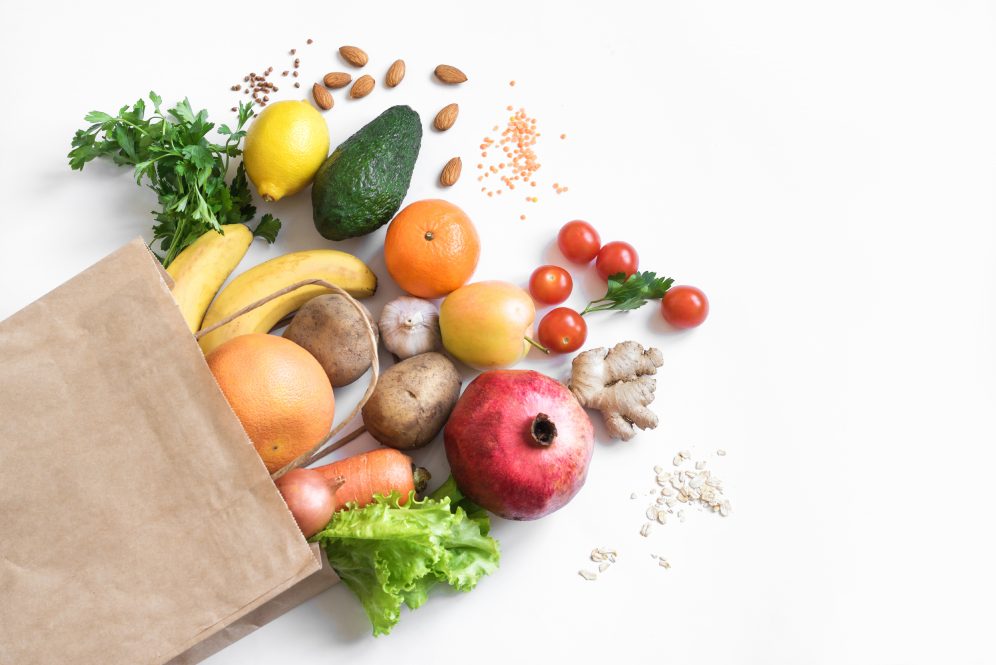When food pantries provide color-coded nutrition information on their shelves, clients select significantly more healthy options and fewer unhealthy options, according to a new study from researchers at the UConn Rudd Center for Food Policy and Obesity and the Institute for Hunger Research and Solutions at Connecticut Food Bank / Foodshare.
1 in 8 Americans are projected to experience food insecurity in 2021, and many people struggling with food insecurity also have high rates of diet-related chronic diseases like type-II diabetes and high blood pressure. This is why it is critical for the charitable food system to provide the most nutrious food possible. To help identify healthy options, the Supporting Wellness at Pantries (SWAP) system ranks food based on their levels of saturated fat, sodium, and added sugars. Each shelf is labeled with the words “choose often,” “choose sometimes,” or “choose rarely” along with the corresponding colors: green, yellow, or red, similar to a stoplight. The healthiest foods are also placed in the most prominent locations so they are easy for clients to locate.
“The goal of this study was to test whether reorganizing the shelves and providing these messages and stoplight signs would actually influence the products food pantry clients chose for their families,” says Sarah McKee, doctoral student in the Department of Human Development and Family Sciences, and lead author of the study.
Researchers tracked the foods selected by over 200 clients in the weeks before and after a food pantry implemented the SWAP system. Then, they compared the proportions of green, yellow, and red items in clients’ baskets from before versus after the pantry made the changes.
Findings indicate that after SWAP was implemented, the proportion of “green” foods selected by clients increased by 11% and the proportion of “red” foods selected decreased by 7%. Both before and after SWAP, fruits and vegetables were the most commonly selected items, however after SWAP, clients were able to identify which fruits and vegetables were “green,” or healthier choices.
“We know from our research that many clients are trying to make healthy choices, but when you are shopping in a food pantry, you don’t have time to pick up every can or box and check the nutrition facts panel on the back,” says Marlene Schwartz, Director of the Rudd Center and senior author on the study. “The purpose of SWAP is to make it really easy for clients to quickly identify, for example, which can of soup is low in sodium and which box of cereal is low in sugar.”
“These results reinforce previous research findings that food pantry guests are interested in selecting healthy food, and the SWAP system can make it easier for guests to select nutritious food to bring home to their families,” says Katie Martin, Executive Director of the Institute for Hunger Research & Solutions at Connecticut Food Bank / Foodshare and co-author on the study.



